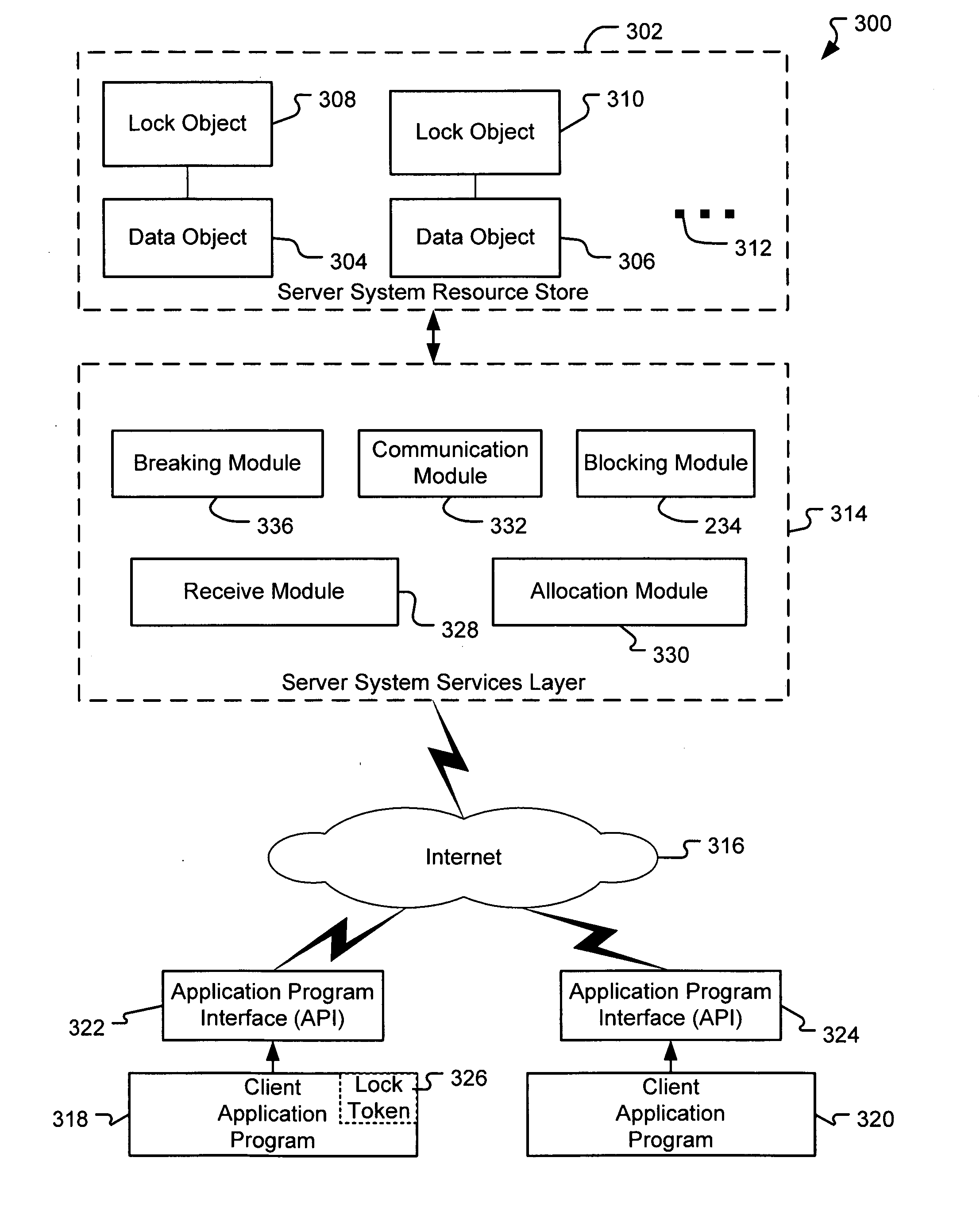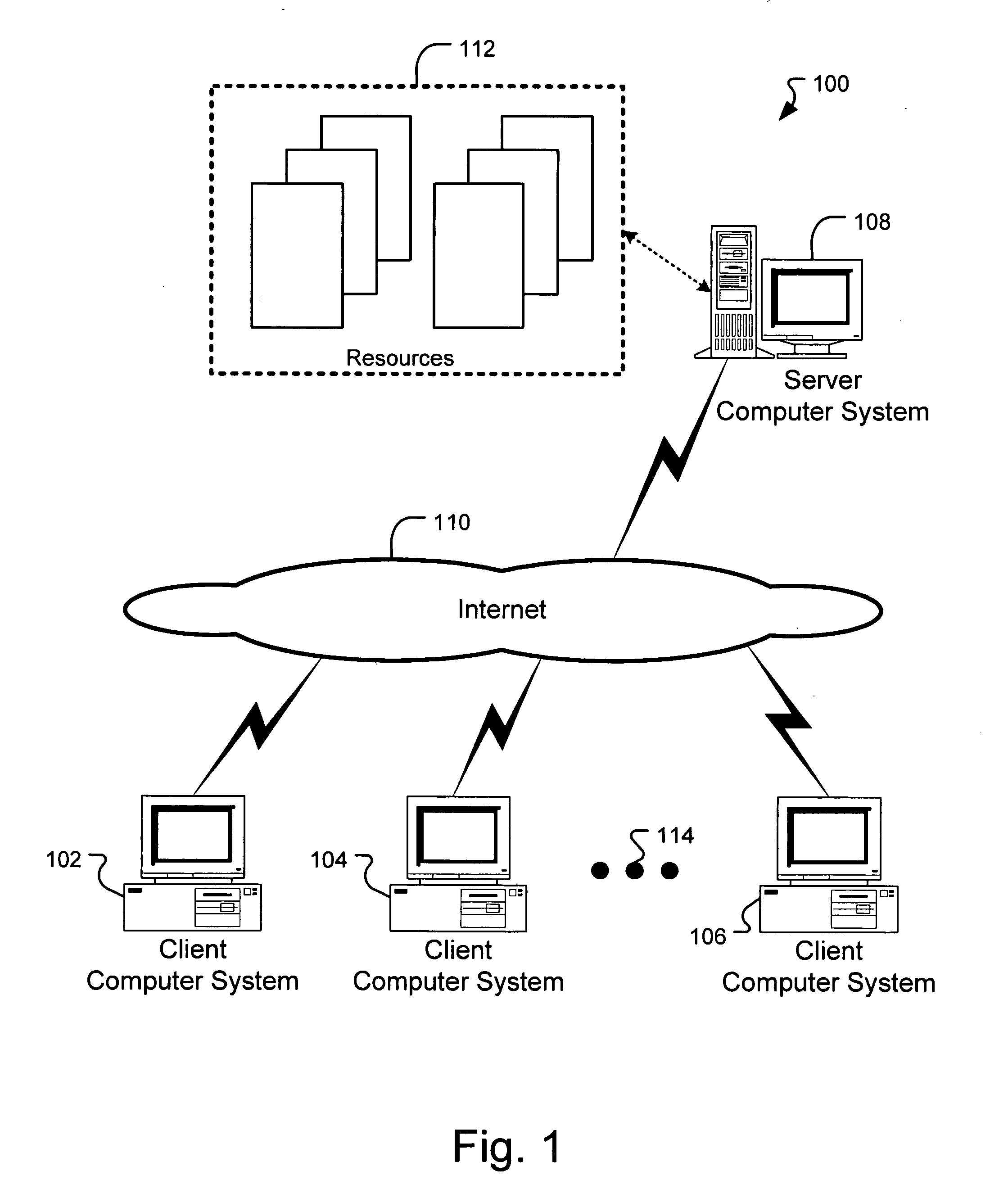Allocating locks in a distributed environment
a distributed environment and lock technology, applied in the field of distributed computing environments, can solve the problems of affecting the availability of resources, affecting the chances of accessing resources, and the method of allocating resources to the next request is unsatisfactory, so as to prevent resource loss, improve client-side polling methods, and alleviate lock starvation
- Summary
- Abstract
- Description
- Claims
- Application Information
AI Technical Summary
Benefits of technology
Problems solved by technology
Method used
Image
Examples
Embodiment Construction
[0023] A distributed environment 100 incorporating aspects of the present invention is shown in FIG. 1. The environment 100 has at least one client computer system, such as client computer systems 102, 104 and 106 that interact with at least one server computer system, such as server computer system 108 over a distributed network, such as the Internet 110. The client computer systems 102, 104 and 106 request access to one or more server computer resources 112. Additionally, there may be other client computer systems as indicated by ellipses 114. The resources 112 relate to computer readable files or objects, such as text documents, application program modules, data objects, properties or attributes for data objects, among others. The resources may be HTML, XML, SGML files, or in other embodiments, the resources may be in another format.
[0024] In an embodiment of the invention, the protocol used by the systems 102, 104, 106 and 108 to communicate is the WebDAV (World Wide Web Distri...
PUM
 Login to View More
Login to View More Abstract
Description
Claims
Application Information
 Login to View More
Login to View More - R&D
- Intellectual Property
- Life Sciences
- Materials
- Tech Scout
- Unparalleled Data Quality
- Higher Quality Content
- 60% Fewer Hallucinations
Browse by: Latest US Patents, China's latest patents, Technical Efficacy Thesaurus, Application Domain, Technology Topic, Popular Technical Reports.
© 2025 PatSnap. All rights reserved.Legal|Privacy policy|Modern Slavery Act Transparency Statement|Sitemap|About US| Contact US: help@patsnap.com



